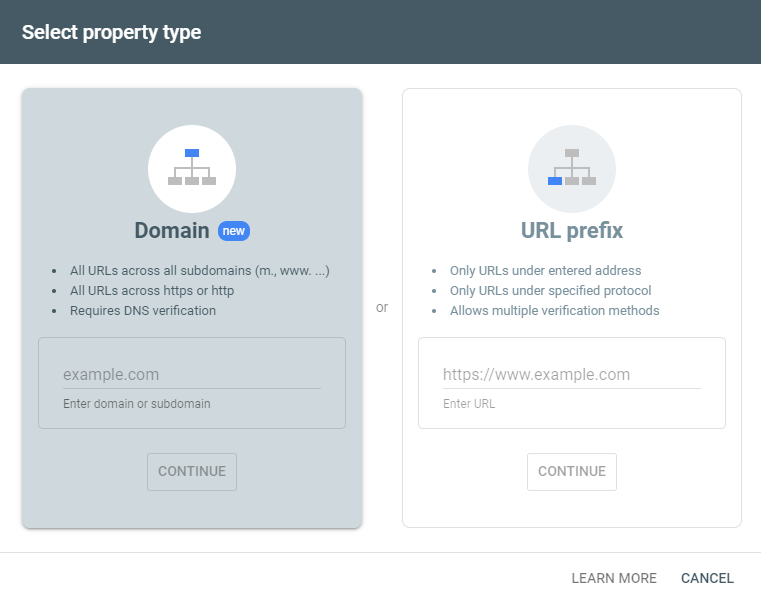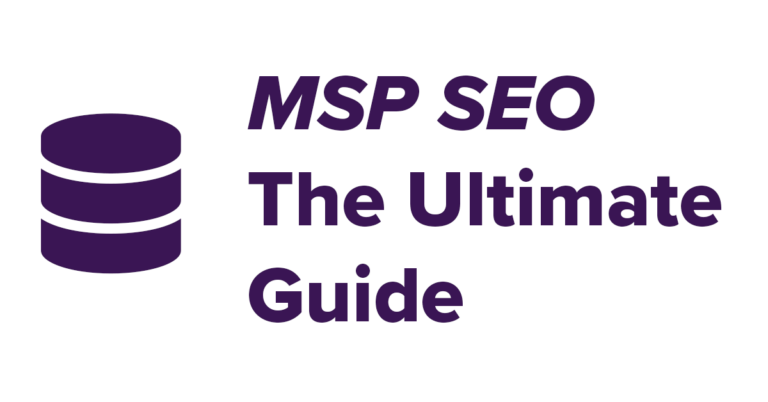This Is Why Your Marketing Sucks
Last Updated: October 29, 2022

Marketing sucks when you take a piggish outlook to investing in it, which ultimately leads to poor ROI and frustration. If you’ve ever done any reading on investing in the stock market, I’m sure you’ve heard the phrase “bulls make money, bears make money, and pigs get slaughtered”. Lately, I’ve been talking to a lot of pigs, and here’s why.
The days are gone where a few bucks, booking the right domain, and tossing up an ill-thought website could make you a millionaire. When it was possible to throw up a website and rank top spot for pages and pages of keywords without any further investment; online marketing was relatively easy because there was 0 competition. It was a total land grab scenario.
More Websites, More Competition
Consider the table below which illustrates the extreme growth in digital competition and density of websites compared to the global population over the past decades.
| Year | Population | #Websites | Density |
| 2000 | 6.143 Billion | 17 Million | .2% |
| 2010 | 6.956 Billion | 207 Million | 2.9% |
| 2019 | 7.713 Billion | 1.94 Billion | 25.2% |
Sources:
- https://www.websitehostingrating.com/internet-statistics-facts/
- https://jonathangray.org/2017/10/09/total-websites-on-the-internet/
- https://www.worldometers.info/world-population/world-population-by-year/
In just the past 9 years, the number of websites on the internet has grown more than 9 times and the websites to population ratio has grown nearly as much. It’s essentially 9 times more competitive on the internet than it was less than a decade ago and growth isn’t showing any signs of slowing down. If you haven’t caught on to the increased competition and increased investment required for success, you might think your marketing sucks, and you might be right.

Oink Oink – Under Investment
One of the most frequent comments I hear on sales calls is that a prospect has tried working with some marketing folks before and it didn’t work out or they weren’t satisfied with the results. Conclusion – “marketing sucks”
I used to be a little piggish myself and think that this was a failure on the previous agency’s part and I’m sure in some cases it was, but I’ve also come to realize that there is a pretty substantial segment of people that simply don’t have a feel for what an adequate investment is in digital marketing today. Spending $500 in isolation on digital is unlikely to yield any meaningful results.
A successful digital marketing program will have several elements:
- A well designed digital marketing funnel
- Specific targeted customer segments and/or personas
- A high quality website
- Actively driven traffic from multiple channels
- Organic
- PPC
- Social
- Referral
- Direct
- A remarketing & email marketing infrastructure to nurture prospects down the funnel
- A firm handle on analytics
- A/B testing and other conversion rate optimization mechanisms
This is not an exhaustive list, but if you look at the above and ask yourself this question – “What would it cost to put this kind of infrastructure in place”, I’m sure the answer is not $500.
Oink Oink – Timing the Market
Another common issue that comes up in conversation – though not explicitly stated – is that people will wait until they are experiencing a decline and cash flow crunch before they decide to pull the trigger on investing in digital. This leaves them in a situation where they don’t have adequate funds to make a meaningful enough investment to build and heat a pipeline with leads or sales.
Marketing sucks when you wait to invest until you’re at a point of desperation for new business. Waiting to invest that long is not only irresponsible, it’s a disservice to your employees who will ultimately get laid off and pay the price. It’s a piggish behavior akin to trying to time the market and look for a large payout on a stock tip. Pigs get slaughtered.
Marketing Sucks With A Piggish Approach
Marketing sucks when you take a piggish approach to investing in it. If you want to change the results you’re seeing and start generating a higher ROI, you have to change your attitude from a pig mentality to a bull or bear mentality.
Marketing should be viewed as an ongoing investment that you are aiming to maximize the returns on and beat other competitors out with the returns generated from that investment. Get defensive with your investments in a bear market and get aggressive and opportunistic in a bull market.
Most people are inherently aggressive or conservative and it’s good to take a stance and be consistent with a philosophy whether that be a bull (agressive) or bear (conservative) approach to marketing. The next paragraphs will cover some tips on how to bull and how to bear with your marketing budget allocations thus maximizing your ROI.
Like our insights?
Subscribe to our email list, and get the latest posts straight to your inbox.
How To Bull and How To Bear
Just so we’ere all on the same page let’s define a bull and a bear.
- Bull – someone who invests and makes money in a growing market
- Bear – someone who invests and makes money in a contracting market
Marketing activities are an investment for future business and a way to retain your existing clients. The first step to bulling and bearing your way into making money is to understand what an appropriate investment is. (We’ve got a great post on setting a marketing budget if you need some guidance.)
One important thing I’d like to mention here in regards to budgeting is that you should keep your investment relatively stable in terms of its percentage of projected revenues. Revise spend up and down as you make adjustments to projected revenues, and make changes to the way in which your budget is spent, but don’t ever completely cut your marketing budget! You will pay the price later!
- In Downturn, Marketing Budget Cuts Don’t Always Make Sense
- 7 reasons not to cut your marketing budget
Marketing In A Bear Market
Recession is a hot topic as of late, in 2019 we’re in the later stages of one of the longest bull markets in our history and the U.S. and China are the core holdouts from a global recession. The fed has been making more cuts than a barber and 2020 growth forecasts have been almost unanimously sub 2%. There are a lot of reasons to remain optimistic about 2020 and beyond, but spending some time thinking about how to get through the leaner times will be to most everyone’s benefit.
Recessions shrink the pie for everyone but they also create a lot of opportunity. Businesses that can’t manage their cash flow and investments get exposed in a recession and there are a chunk that go out of business. The last recession caused nearly 200,000 businesses to close their doors. This is scary, but for those who can weather the storm, it leaves considerable market share up for grabs.
Dying businesses rarely go down without a fight and there will be a tight-fisted period from end consumers as everyone gets their bearings (no pun intended!) You have to be smart about your spend and that starts with a firm handle on analytics and channel performance. It may not be wise to be aggressive on customer acquisition in the early stages of a recession – this is often when the companies who realize their marketing sucks dump last ditch capital into pay per click spend, thus raising everyone’s bids.
In the later stages of a recession – when the strong haven’t survived and the doors have already closed – it can be very fruitful to be aggressive with spend on customer acquisition.
This all leads up to the question: how can you invest your marketing dollars efficiently when customer acquisition prospects are dim or unprofitable?

Tighten Bonds With Existing Customers
Marketing shouldn’t end once a customer is in the door, but I think we’re all a little guilty of giving a little less attention to existing customers in a digital sense. This doesn’t have to be the case though.
- Are you running drip email campaigns at regular intervals to your existing customers educating them about cross sell and up-sell service offerings?
- Are you offering them a chance to schedule account management phone calls so they feel like they are getting the best service possible when they want it?
- Have you updated your segments and messaging to those customer segments so that they are receiving the right messaging?
- Do you have a customer support portal? Has it been updated?
Recessions present a fantastic opportunity to invest marketing dollars into internal marketing efforts that strengthen bonds with existing customers. Not only does shifting investment around in these areas reduce churn, which is invaluable in a recession, it will knock the socks off of new customers that come in the door when things turn around.
Implement and Integrate a CRM
Nobody’s marketing funnel is leak free, but a CRM can really patch the seams on those soft leads that tend to slip through the cracks. Implementing a CRM is no small task though – it goes beyond signing up for the free version of hubspot and calling it a day. Implementing a CRM is a fundamental cultural shift for many organizations.
I talk to sales people regularly during the course of networking and one of their main complaints about the job is data entry from using a CRM. While there are elements of everyone’s job they aren’t a fan of, organizations in general are guilty of a ready-fire-aim approach when it comes to purchasing and implementing organizational software like a CRM. A successful launch will include a communication and roll out plan, training for staff, and internal marketing on the benefits of using a CRM thus driving adoption. Be sure and budget for these expenses – on top of just the software licensing and usage costs – to gain a leg up on the competition.
Shift Investment Into Organic Marketing Channels
One excellent way to use a marketing budget in a downturn effectively is to invest more heavily in organic marketing channels such as content marketing with blogging, YouTube how to tutorials for your user base, and other long duration value accruing media that will leave you well positioned for the recovery. Here are a few types of content marketing for inspiration:
- Blogging
- eBooks
- Whitepapers
- Checklists
- Video Tutorials
- Video Commentary
- InfoGraphics
Blogging and content marketing in general is a tough investment for business owners to wrap their heads around due to the deferred ROI nature, but deferred ROI investments make much more sense when compared to investing in a single use channel like PPC during a recession. Recessions are about surviving and being best positioned for recovery. Content marketing is an excellent way for customers to discover your business when they start shopping again and will also help passively develop relationships with consumers for high-dollar, long-sales cycle products and services.
Update Your Website And Landing Pages
Things can turn from bear to bull quite quickly on a micro scale and the last thing you want to do when people start shopping is realize your website is out of date and needs to be refreshed. If you know you’ve got conversion rate problems, take the opportunity when business is slow to update your website and landing pages. This will leave you well positioned to capitalize on paid media, and social media promotion when things turn around.
Good web developers tend to get seriously backed up during a bull market (due to the all the oinking pigs trying to time the market) and the chances of finding a good one to take care of you when people are competing for their time is reduced.
Marketing In a Bull Market
It’s been quite a long time since we’ve had a true economic boom in the U.S. but not all bull markets are trance-like spending sprees akin to battlefield blood lust. Even a 3% growth still presents opportunities and should influence how your marketing spend is allocated as well as your projected revenues. A rising tide floats all ships and its likely new customers will be entering your market as well as providing new investments from incumbents.
The name of the game in bull markets is customer acquisition and making people aware of your services. If you handled the preceding bear market appropriately, you should be well positioned for streamlined growth and highly profitable operations with a few tweaks.

Shift Investment Into Paid Advertising
Bull markets aren’t the time to get skittish on paid media. Pay per click on social media and paid clicks on search engines are highly effective ways to drive people to your website and generate leads and sales for your business. Shifting a higher amount of your marketing budget into paid media will allow you to expand your reach and get in front of eyeballs not typically available through organic means.
Expanding your reach in market conditions where demand exceeds supply allows you to grow your business quickly. This is another reason it’s important to invest in a bear market in things that help you grow and scale fast. The worst thing you can do is get capacity capped and have to turn business away.
See:
Invest In Customer Feedback Mechanisms
Markets change, and bull markets are often driven by technological innovation. It can be tempting to just ignore change and grow as fast as possible but this leads to headlines like WeWork’s crash. It’s important to make sure your service offerings are aligned with what customers are seeking now and in the future and collecting customer feedback during a bull market can make your growth sustainable. Some options include:
- Consumer surveys
- Focus groups
- Social polls
- Calling and asking
Shift Investment Into Social Media
If you’re bringing in a lot of new customers and doing great work for them then you’d be doing yourself a disservice by not shifting some dollars to social media. Getting more active on social is a great way to socialize the increased activity and help your new customers become your best marketing tool and earnings multiplier.
- Freshen up your graphics to the latest visual standards on your social media pages
- Hire someone to post regularly or outsource posting for increased visibility
- Run paid advertising campaigns on social media to promote your content and achievements
- Expand into new platforms (tik tok for example)
- Update your service offerings, business description, and other supporting information to reflect changes in your business
- Promote changes to your team and additions of new team members
Your Marketing Sucks, But It Doesn’t Have To
If you’re reading this maybe your marketing sucks, but it doesn’t have to – and don’t feel bad if it does. Everything in business is a learning process and we all have to focus on getting better one day at a time.
In this post we’ve talked a about a few reasons marketing sucks. Chronic under investment, trying to time the market, and not allocating your spend properly based off economic conditions, were all contributors to bad marketing.
We talked about changing the mentality from a pig mentality to a bear and bull mentality and few ways you can change how your marketing dollars are spent to maximize your returns based on your outlook and economic conditions.
Enjoyed this post? Don’t forget to share! Don’t hesitate to reach out if you’d like to talk more about it or just give us an angry rant.




































Leave a Comment